Manhattan’s luxury real estate market delivered its strongest first quarter performance in six years, with apartment sales surging 29% compared to the same period in 2024. The remarkable showing comes as wealthy buyers increasingly view real estate as a safe haven amid volatile equity markets and economic uncertainty, signaling a fundamental shift in investment strategies among high-net-worth individuals.
Record-Breaking Transaction Volume and Values
Manhattan closed 2,560 apartment sales during the first quarter, compared to 1,988 transactions in the corresponding period last year. More significantly, the total value of apartment sales reached $5.7 billion, representing a substantial 56% increase over the same quarter in 2024. This performance marks the market’s best opening quarter since 2019, suggesting robust underlying demand despite broader economic headwinds.
The luxury segment led this remarkable performance, with apartments priced above $5 million experiencing a 49% surge in sales volume. The ultra-high-end market, comprising properties valued at $20 million or more, achieved its strongest first quarter since 2019, demonstrating the resilience of Manhattan’s premier residential sector.
Cash Dominance and Performance Variations
A defining characteristic of the current market is the prevalence of all-cash transactions, which accounted for 58% of all sales during the quarter. Among properties priced above $3 million, cash buyers represented an overwhelming 90% of transactions. This cash-heavy market structure has effectively insulated luxury real estate from persistently elevated interest rates, allowing ultra-wealthy buyers to operate independently of mortgage market conditions.
The strength in cash transactions reflects broader portfolio diversification strategies among affluent investors, who are increasingly viewing Manhattan real estate as a stable asset class amid market volatility. This trend has created a two-tier market structure, where luxury properties remain largely immune to monetary policy changes while mid-market segments show greater sensitivity to financing conditions.
Market dynamics vary significantly across price segments, revealing distinct buyer behaviors and preferences. The mid-market segment, typically defined as properties priced between $1 million and $3 million, experienced a 10% decline in signed contracts, reflecting the impact of higher financing costs on mortgage-dependent buyers.
Conversely, properties at the lower end of the spectrum, priced between $500,000 and $1 million, performed better than the mid-market tier, suggesting different demand dynamics and financing capabilities across buyer segments. The ultra-luxury market’s exceptional performance underscores the growing wealth concentration among Manhattan’s buyer pool.
Supply Constraints and Demographic Shifts
New York City’s housing inventory continues facing significant constraints, with available units struggling to meet growing demand. Current inventory levels remain at historic lows, particularly in Manhattan and Brooklyn, where new development opportunities are limited by zoning restrictions and space constraints.
The development pipeline shows modest growth, with approximately 20,000 new units expected to enter the market by year-end. However, this additional supply may prove insufficient to offset projected demand, especially in luxury and mid-market segments. The supply-demand imbalance is expected to maintain upward pressure on prices, particularly in neighborhoods with strong amenities and transit accessibility.
Several demographic trends are reshaping Manhattan’s real estate landscape. The emergence of “boomerang wealthy” buyers—affluent individuals who relocated to destinations like Florida during the pandemic and are now returning to New York—has contributed significantly to transaction volume. This reverse migration reflects changing priorities as remote work policies normalize and urban amenities regain appeal.
The generational wealth transfer phenomenon is also driving market activity, with increasing numbers of buyers representing children of wealthy parents utilizing trust funds or family office resources. This trend is creating a new buyer demographic that operates with different financial parameters and investment timelines than traditional purchasers.
Corporate Influence and Global Appeal
Back-to-office mandates from major financial institutions and corporations are bringing affluent buyers back to the city on a more permanent basis. Wall Street’s gradual return to office work is expected to stabilize both commercial and residential markets, particularly in Manhattan’s Financial District and surrounding residential neighborhoods.
The technology sector’s expansion continues supporting real estate demand, with major companies expanding their New York footprints. This growth is driving demand for both commercial and residential properties in areas like Hudson Yards and Long Island City, creating new centers of real estate activity beyond traditional Manhattan neighborhoods.
New York City maintains its position as a premier destination for international real estate investment, with sustained global interest projected through the remainder of 2025. Foreign investors continue viewing Manhattan real estate as a stable long-term investment vehicle, supported by the city’s transparent legal system, robust property rights, and sophisticated market infrastructure.
Emerging trends show increased activity from Asian and Middle Eastern investors, particularly in luxury residential properties and prime commercial assets. The technology sector’s expansion and the city’s position as a global financial hub continue attracting foreign corporate investment, driving demand across property types.
Interest Rate Outlook and Market Projections
Current projections suggest interest rates may continue moderating through the remainder of 2025, potentially providing additional stimulus for buyer interest, particularly among first-time homebuyers who have remained on the sidelines. However, market response will likely vary significantly across price segments.
Prime Manhattan neighborhoods are projected to experience continued appreciation, while outer boroughs demonstrate significant growth potential, particularly in areas with emerging tech hubs and improved transit connectivity. Commercial real estate transactions are expected to reach substantial volumes through year-end, indicating continued institutional confidence in the market.
The combination of strong Q1 performance and improving market fundamentals suggests Manhattan’s real estate market is entering a period of sustained stability. While signed contracts for properties priced above $10 million tripled in March, indicating continued luxury market strength, the broader market shows signs of balanced growth rather than speculative appreciation.
The convergence of institutional capital flows, zoning reforms, and sustainability mandates is reshaping real estate dynamics across all segments. This transformation, combined with demographic shifts and evolving work patterns, positions New York’s real estate market for continued evolution from pandemic recovery toward a new market equilibrium that balances traditional investment appeal with contemporary lifestyle demands.
Richard Tayar is the founder of Columbus International, an international real estate firm bridging markets between the United States and Italy, with focus on New York, Milan, Florence, and Miami.



